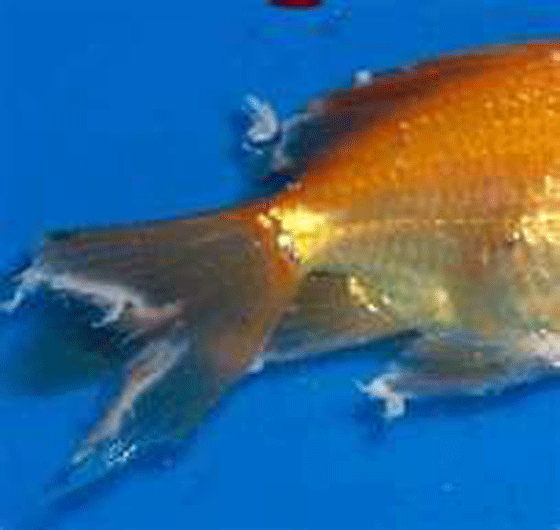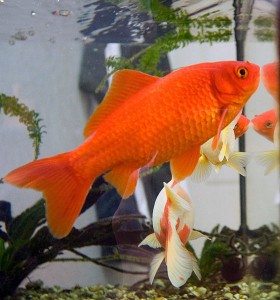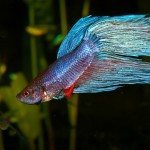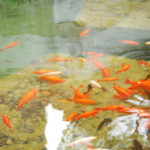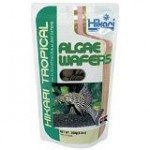Goldfish diseases and treatments
Stressed fish are more susceptible to disease and it doesn’t take much for goldfish to become a little stressed out.
Changing all the water at once creating an unfamiliar environment or simply introducing new fish causes fish to be more vulnerable to disease.
Detecting and diagnosing disease early greatly improves the outcome for goldfish.
Anchor Worms
What are they?
These parasitic organisms burrow into the system of the goldfish and feed from its nutrients. The most common way this condition is introduced is via live feed, as the worms need a host before latching themselves on to the goldfish.
What are the symptoms?
Early in the infestation you might notice these signs.
- scratching (fish rubbing itself against objects in and around the tank)
- the appearance of a thread like material outside the fish’s body
To diagnose anchor worms you have the advantage that parasites are large enough to be seen with the naked eye.
- You might see louse’s eye spots on the bump when watched closely. Grey-green to brownish raised spots on the fish.
- Your fish may be rubbing itself against items in the tank.
How to treat anchor worms
There are options. Potassium Permanganate is readily available and can be added to the tank water. It should be administered every day for around 3 – 4 days.
If possible, carefully remove parasites with tweezers then clean the sore with iodine or hydrogen peroxide to prevent another infection.
Alternatively, treat the water with Microbe-Lift Lice and Anchor Worm treatment or Dimilin.
Provided it’s caught in the early stages of invasion, anchor worms shouldn’t cause too much harm to your fish. You might want to take extra care when it comes to feeding choices.
Fish Lice or Argulus
What are fish lice?
Of all common goldfish diseases, Argulus is considered to be one of the most complex as there are 3 types of louse that can cause an infestation. All behave slightly different from one another.
Argulus Japonicus is the most common form of lice, followed by Argulus foliaceus and Argulus coregoni.
These can affect all types of fish. Goldfish are believed to be more naturally susceptible to the lice as scientists believe the two evolved simultaneously.
Whether this is true or not is certainly up for debate, but what we do know is that fish lice are one of the most common goldfish diseases.
How do I know my fish has lice?
Fish are uncomfortable as they squirm around trying to dislodge the lice. Much like a dog when trying to rid itself of itchy fleas.
How to treat fish lice
Like Ich, Argulus is one of just a few goldfish diseases that can successfully be treated naturally, although many goldfish owners prefer to speed up the process using water treatments.
Lice thrive in more moderate temperatures, and even an increase of just a few degrees can shorten their lifespan significantly. The problem is that Argulus can live for months, with an average lifecycle between 30 and 60 days. That’s a long time for your poor fish to be infected.
The natural route is very effective and involves gradually raising the water temperature of the tank to around 26 degrees celsius in 1 degree per hour increments.
However if you want to quicken the process, use a water treatment. Preferably one containing diflubenzuron, like Dimilin Alternatively Microbe-Lift Lice and Anchor Worm Treatment.
Tail or Fin Rot
What is fin rot?
This condition is generally necrotic loss of fin tissue and is caused by stress and poor environmental conditions. It’s a common bacterial disease that’s infectious, so it can very easily spread to other fish in the tank.
What are the symptoms?
Symptoms of this disease include ragged fins and a hole appearing in the middle of the edge of the fin. The disease starts around the edges causing it to look ragged. More and more of the tissue is slowly destroyed. If left untreated it will cause swimming problems for the affected fish and will eventually be fatal.
How to treat tail rot
It can be treated by melafix, using salt, or hydrogen peroxide bath.
The key to preventing this disease is to maintain good water quality.
- Remove the affected fish from the tank
- Clean the tank, vacuum gravel, and clean accessories thoroughly.
- Change the water in the tank to improve the quality and treat the water.
Ich or White Spot
What is Ich?
Also known also as freshwater white spot disease or Ichtyopthirius Multifiliis. This is one of the most common goldfish diseases.
Ich is caused by a microscopic parasite which is known as the Ichthyophthirius multifiliis. The parasites attach themselves to the goldfish which then forms the white spots.
Don’t worry if you can’t quite get your tongue around Ichthyophthirius. In the goldfish world this is often shortened simply to ‘Ich’ (pronounced ‘Ick’), or ‘White Spot Disease’ referencing the white, salt-like grains that appear on gills of infected fish.
What are the symptoms?
- visible white dots covering the body of the fish
- rapid gill movements in later stages of disease
- the fish frequently rubbing itself against objects in the tank.
Ich is present in many freshwater tanks but as it only affects vulnerable fish, we often don’t realize we have an infestation if we have healthy goldfish.
Unfortunately it doesn’t take much for goldfish to become a little stressed out. Changing the water, for example, can create an unfamiliar environment, while the introduction of new fish also causes anxiety. A statistic I’ve read reports a 40% prevalence rate of Ich among goldfish. It’s when fish are susceptible due a weakened immune or in a stressed state that they’re prone to Ich.
How to Ick in a fish tank
The good news is there are successful treatments for Ich. In some cases, it can be successfully treated naturally with no need to medicate your fish.
1. The product API Super Ich Cure is effective.
2. Malachite Green treatment can be administered
3. Ich can be treated by vacuuming the gravel and then treating the whole fish tank with a salt bath.
4. Another option is to increase tank water temperature gradually. The heat doesn’t kill Ich but what it does is prevent the parasites from breeding. So once all the current parasites have come to the end of their life cycle, your tank should be clear. Keep the temperature raised for around 10 days before returning to normal.
While goldfish are often happiest living in temperatures between 23 and 24 degrees celsius, increasing the heat of the tank is a very effective way of killing off those pesky Ich parasites.
Raise the temperature of your tank gradually to avoid creating even more stress for your fish, preferably at a rate of around 1 degree per hour until you reach 30 degrees. While fish are happiest in moderate temperatures they can withstand anything between 10 and 30 degrees for short periods.
Flukes
What are the symptoms?
- The can include flashing, irritation, difficulty in breathing and lethargy
- A gill or body scrape is an important indicator to watch out for
How to treat flukes
Treat flukes by using Prazi Pro in a fish tank and Praziquantel in a fish pond.
There’s 2 ways it can be spread. Firstly due to a poor environment due to any of these factors.
- overcrowding in the tank
- poor water quality because of waste accumulation
- over feeding resulting in excess food in the tank
- water that’s too cold
- fish that are stressed from too much handling
- bullying by other fish
The second possible cause is from one fish nipping the other. If you notice this behavior separate the fish to different tanks.
For the most effective treatment it’s important to catch the condition in the early stages.
Constipation
- This is not a disease but painful nonetheless for your goldfish.
- It’s caused by a diet without variety or by feeding your fish with too many starchy foods.
- Symptoms of this disease include difficulty passing excrement.
Treatment:
Change your goldfish diet by including more vegetables. Use different varieties like spinach and peas. You might want to try tubifex worms as well.
Dropsy
What is dropsy in goldfish?
This is a very dangerous disease. It’s infectious and can be caused by bacteria, parasites, or a virus.
A common cause is poor maintenance of the tank, particularly when it comes to the quality of the water. When the tank water becomes too contaminated, it becomes a perfect breeding ground for disease causing organisms which then take on the fish as host.
How do I recognise it?
Warning signs include swollen eyes, swollen and inflamed or distended belly and scales that protrude (or are flared like pine cones). The fish has a generally pale complexion.
How to treat dropsy in fish
It’s hard to diagnose and treat. It usually spreads rapidly and by the time pet owners notice anything, it may already be too late. If you catch it early enough there are treatments that your can do at home.
The best chance you (and your fish) have is to keep the tank well maintained all the time. Regular cleaning is very important, particularly if you’re housing more than 1 goldfish at a time. It’s heart-breaking to watch goldfish die from this disease as it’s excruciating.
For treatment of dropsy and all other goldfish diseases, ideally consult your vet to prevent your goldfish from an untimely death. Your vet can do frequent check ups on your goldfish.
Lymphocystis
If you’re looking for the most bizarre of goldfish diseases, you’ve found it! Despite being relatively common, Lymphocystis isn’t very well understood, even by scientists who have been studying the disease for decades.
What is Lymphocystis
This is the abnormal growth of a cluster of cells which can almost be likened to benign tumors in humans. Caused by a virus, they’re visible and very real but don’t appear to present much of an issue.
How does it affect goldfish?
It’s thought these growths may slightly suppress the immune system leaving fish susceptible to parasites such as Ich and other fish diseases that pose risk. Lymphocystis itself is not believed to be dangerous even thought the fish become disfigured.
How to treat it
There’s a lack of understanding about the nature of this illness so it’s no surprise that there’s currently no known treatment.
Diseases that have a specific cause can often be treated successfully, but with mystery surrounding these cell growths, there’s very little that can be done for goldfish diagnosed.
Although it’s not thought to pose a significant risk to your fish directly, a weakened immune system means that the fish is vulnerable to a secondary disease seizing opportunity.
While some fish veterinarians may recommend surgical removal of the growths, others might suggest experimental treatments such as a DNA vaccine, many think the best treatment is simply good care and attention.
Due to the suppressed immune system, keep the fish stress-free and as healthy as possible in well-treated water to reduce further risk of secondary disease. As this is a virus, the fish’s own system can, over time, learn how to cope with the disease and fish can improve.
Flex
What is it?
- Flex is caused by bacterium, although the disease appears as if it’s a fungus.
- Symptoms include cotton like growths. It’s also been described as looking like mold.
How is Flex treated?
Flex is treated using common water antibiotics like Spectogram, Maracyn, or salt.
The good news is that generally there’s a low rate of disease among goldfish. They’re pretty tough cookies! Goldfish diseases, when they do occur, tend to be mild and easily treatable.
The risk of many diseases can be reduced significantly through good fish care, particularly if new fish are quarantined before introducing them to your tank. This ensures that any disease your new addition might have won’t be transferred to your existing fish.
Being aware of common goldfish diseases and sticking to a strict maintenance schedule will help your fish live longer, vibrant and healthy lives.
Still not able to diagnose the goldfish illness or found the treatment you’re after? You can check unusual behavior your goldfish is showing with causes and treatments here.



